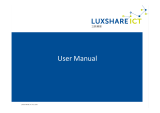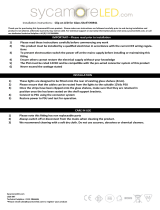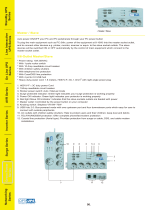
Installation Manual 17
3.5.4 CID8 Card (KX-TDA0193) ................................................................................................ 91
3.5.5 E&M8 Card (KX-TDA0184) .............................................................................................. 92
3.5.6 T1 Card (KX-TDA0187) .................................................................................................... 95
3.5.7 E1 Card (KX-TDA0188).................................................................................................... 98
3.5.8 BRI4 Card (KX-TDA0284) and BRI8 Card (KX-TDA0288) ............................................. 101
3.5.9 PRI30 Card (KX-TDA0290CE/CJ).................................................................................. 105
3.5.10 PRI23 Card (KX-TDA0290) ............................................................................................ 109
3.5.11 IP-GW4E Card (KX-TDA0484) ....................................................................................... 112
3.5.12 IP-GW16 Card (KX-TDA0490) ....................................................................................... 114
3.6 Information about the Physical Extension Cards...................................................... 116
3.6.1 CSIF4 Card (KX-TDA0143) and CSIF8 Card (KX-TDA0144)......................................... 116
3.6.2 DHLC8 Card (KX-TDA0170) .......................................................................................... 118
3.6.3 DLC8 Card (KX-TDA0171)............................................................................................. 121
3.6.4 DLC16 Card (KX-TDA0172) ........................................................................................... 123
3.6.5 SLC8 Card (KX-TDA0173) ............................................................................................. 125
3.6.6 EXT-CID Card (KX-TDA0168) ........................................................................................ 127
3.6.7 SLC16 Card (KX-TDA0174) and MSLC16 Card (KX-TDA0175) .................................... 128
3.6.8 IP-EXT16 Card (KX-TDA0470)....................................................................................... 130
3.7 Information about the Other Physical Cards ............................................................. 132
3.7.1 OPB3 Card (KX-TDA0190)............................................................................................. 132
3.7.2 DPH4 Card (KX-TDA0161)............................................................................................. 133
3.7.3 DPH2 Card (KX-TDA0162)............................................................................................. 135
3.7.4 EIO4 Card (KX-TDA0164) .............................................................................................. 138
3.7.5 ECHO16 Card (KX-TDA0166)........................................................................................ 141
3.7.6 MSG4 Card (KX-TDA0191) ............................................................................................ 142
3.8 Connection of Extensions ........................................................................................... 143
3.8.1 Maximum Cabling Distances of the Extension Wiring (Twisted Cable) .......................... 143
3.8.2 Parallel Connection of the Extensions............................................................................ 144
3.8.3 Digital EXtra Device Port (Digital XDP) Connection ....................................................... 146
3.8.4 First Party Call Control CTI Connection ......................................................................... 151
3.9 Connection of DECT Portable Stations ...................................................................... 152
3.9.1 Overview......................................................................................................................... 152
3.9.2 Procedure Overview ....................................................................................................... 154
3.9.3 Site Planning .................................................................................................................. 156
3.9.4 Before Site Survey.......................................................................................................... 160
3.9.5 Site Survey Using the KX-TCA255/KX-TCA256/KX-TCA355/KX-TD7590..................... 165
3.9.6 After Site Survey............................................................................................................. 169
3.9.7 Connecting a Cell Station to the PBX............................................................................. 170
3.9.8 Wall Mounting................................................................................................................. 180
3.10 Connection of 2.4 GHz Portable Stations................................................................... 184
3.10.1 Overview......................................................................................................................... 184
3.10.2 Procedure Overview....................................................................................................... 185
3.10.3 Site Planning .................................................................................................................. 187
3.10.4 Before Site Survey.......................................................................................................... 191
3.10.5 Site Survey ..................................................................................................................... 194
3.10.6 After Site Survey............................................................................................................. 198
3.10.7 Connecting a Cell Station to the PBX............................................................................. 199
3.10.8 Wall Mounting................................................................................................................. 207
3.11
Connection of Doorphones, Door Openers, External Sensors, and External Relays
.......... 212
3.11.1
Connection of Doorphones, Door Openers, External Sensors, and External Relays
........... 212
























